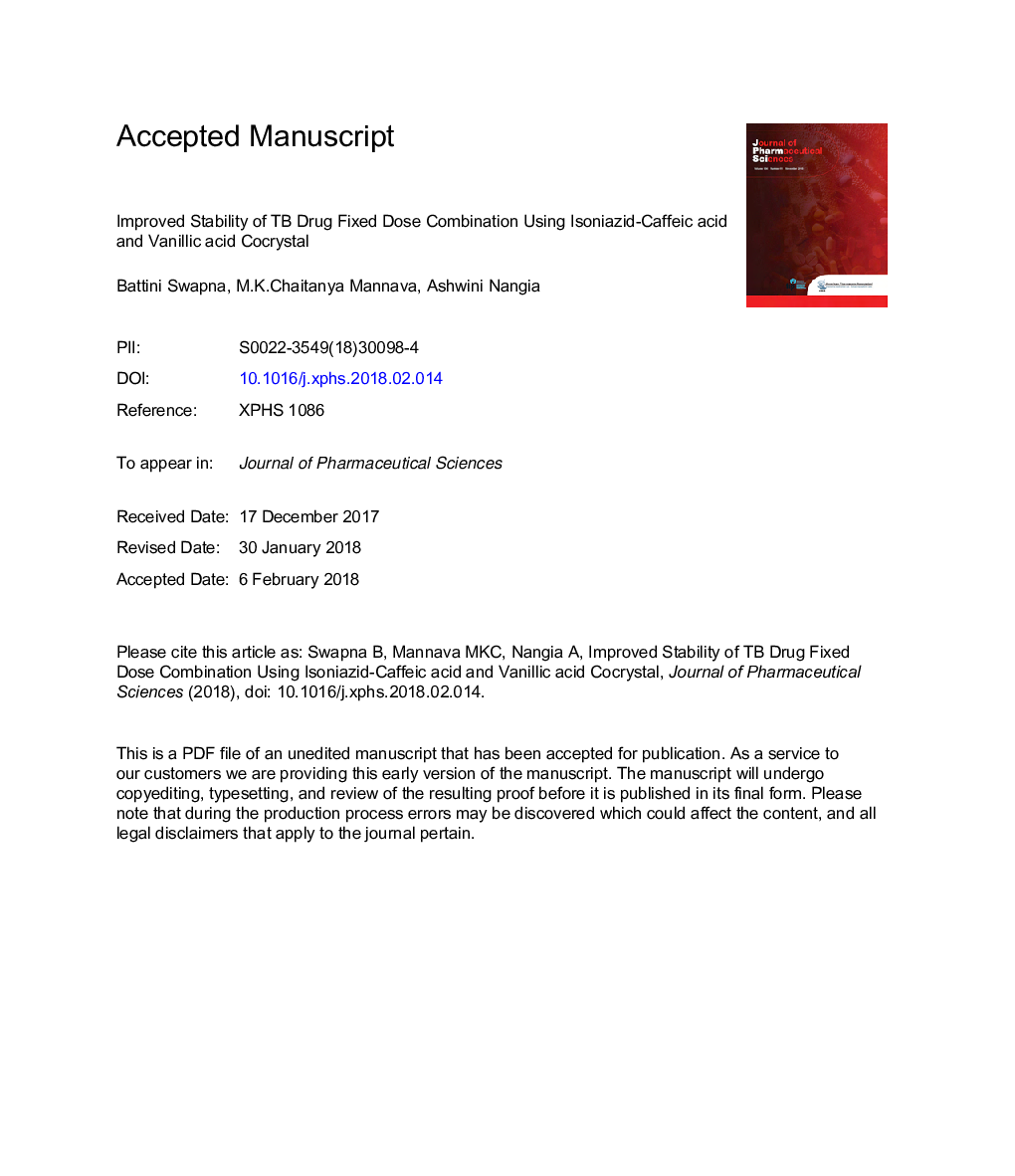| Article ID | Journal | Published Year | Pages | File Type |
|---|---|---|---|---|
| 8513290 | Journal of Pharmaceutical Sciences | 2018 | 33 Pages |
Abstract
The classic fixed-dose combination (FDC) of 4 tuberculosis drugs, namely rifampicin (RIF), isoniazid (INH), pyrazinamide (PZA), and ethambutol dihydrochloride (EDH) has the twin issues of physical stability and RIF cross-reaction in the 4-FDC. The major reason for these quality issues is the interaction between RIF and INH to yield isonicotinyl hydrazone in drug tablets. Pharmaceutical cocrystals of INH with caffeic acid (CFA) (PZA + EDH + RIF + INH-CFA cocrystal) and vanillic acid (VLA) (PZA + EDH + RIF + INH-VLA cocrystal) are able to stabilize the FDC formulation compared with the reference batch (PZA + EDH + RIF + INH). Stability studies under accelerated humidity and temperature stress conditions of 40°C and 75% relative humidity showed that the physical stability of the cocrystal formulation was superior by powder X-ray diffraction and scanning electron microscopy analysis, and chemical purity was analyzed by high-performance liquid chromatography. Changes in the composition and structure were monitored on samples drawn at 7, 15, 22, and 30 days of storage. FDC-INH-CFA cocrystal batch exhibited greater stability compared with FDC-INH-VLA cocrystal and FDC reference drug batches. The superior stability of INH-CFA cocrystal is attributed to the presence of stronger hydrogen bonds and cyclic OâHâ¯O synthon in the crystal structure.
Related Topics
Health Sciences
Pharmacology, Toxicology and Pharmaceutical Science
Drug Discovery
Authors
Swapna Battini, M. K. Chaitanya Mannava, Ashwini Nangia,
